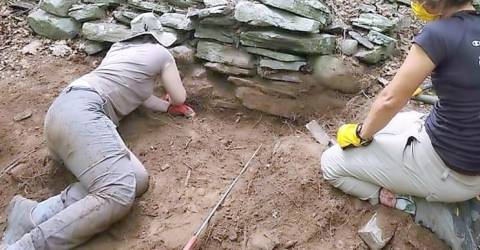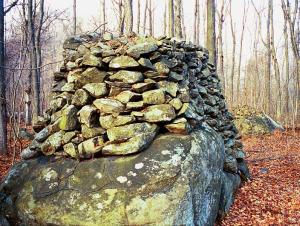Hello everyone. I appreciate the feedback this thread received. I've got to say, though, I'm not sure that I agree with the assumption that these mounds were made for the purpose of either a) removing field stones, or b) marking property lines.
First, I have been doing some reading and found the following paper insightful as nobody really definitively knows the originator of these piles.
Overcoming the Ambiguity of a Rock Pile
Additionally, I made the trek out there yesterday and did some more inspecting.
First, here is a small pile of rocks from the corner of a field on another area of the property:
View attachment 2048095
As you can see, these have been haphazardly tossed or pushed to the perimeter of the field, which totally makes sense. The pile does not look organized and hand stacked, and certainly does not contain a giant stone that requires 2-3 men to pick it up at the top of the pile.
Upon inspecting several rock piles again, I definitely noticed that they appear in a random organization, with some as close as ~15 ft from each other. This could not mark a consistent property line.
Finally, after viewing one of the largest piles, I noticed something rather interesting about several of the rocks:
View attachment 2048098
These rocks have clear water erosion features which would indicate to me that they came, not from the surrounding field (which is still full of stones, btw), but the branch at the bottom of the hill which is filled with similar rocks. This would actually be a very difficult task by hand because it is around 0.1 miles at the closest and a very steep climb!
Anyway, that's about it. I'm not saying they are prehistoric, but I am saying that I don't believe they were either intended to mark property lines or to clear the local field.










